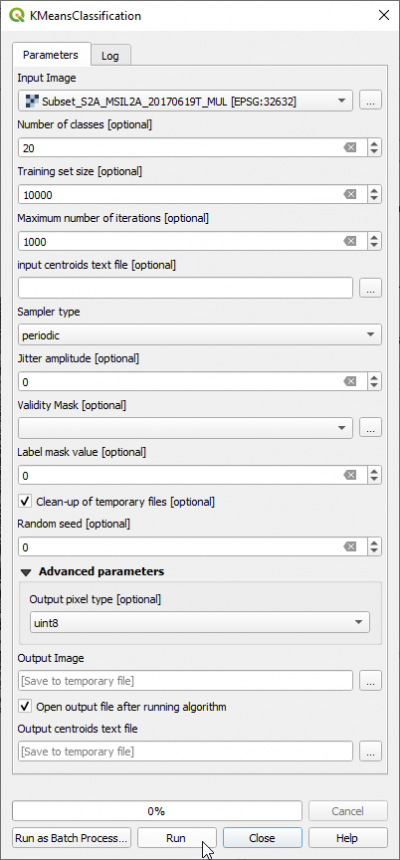Unsupervised classification (Tutorial)
From AWF-Wiki
(Difference between revisions)
(→Unsupervised K-Means classification) |
(→Unsupervised K-Means classification) |
||
| Line 7: | Line 7: | ||
* Set the {{button|text=Number of classes}} to {{typed|text=20}} | * Set the {{button|text=Number of classes}} to {{typed|text=20}} | ||
* Check the {{button|text=Training set size}} to {{typed|text=10000}} | * Check the {{button|text=Training set size}} to {{typed|text=10000}} | ||
| + | * Output pixel type: {{typed|text=uint8}} | ||
* Click on {{button|text=Execute}}. | * Click on {{button|text=Execute}}. | ||
[[File:qgis_otb_kmeans.png|400px]] | [[File:qgis_otb_kmeans.png|400px]] | ||
Revision as of 09:45, 22 November 2019
Unsupervised K-Means classification
- Type into the search box of the Windows taskbar: mapla.bat. Click on mapla.bat to open the Monteverdi Application Launcher.
- In the search engine of the Processing Toolbox, type kmeans and double click KMeansClassification.
- Specify a multispectral image as Input Image.
- Specify directory and name for the Output image. Select the output data type uint 8 from the pull-down list.
- Set the Number of classes to 20
- Check the Training set size to 10000
- Output pixel type: uint8
- Click on Execute.
- Load the resulting image into QGIS. It is single band file with 20 grey levels labeled from 0 to 19.
- Layer Properties --> Symbology --> Render type. Switch to Singleband pseudocolor and select a Color ramp (e.g. Spectral). Select the Mode Equal interval and set the number of classes to 20
